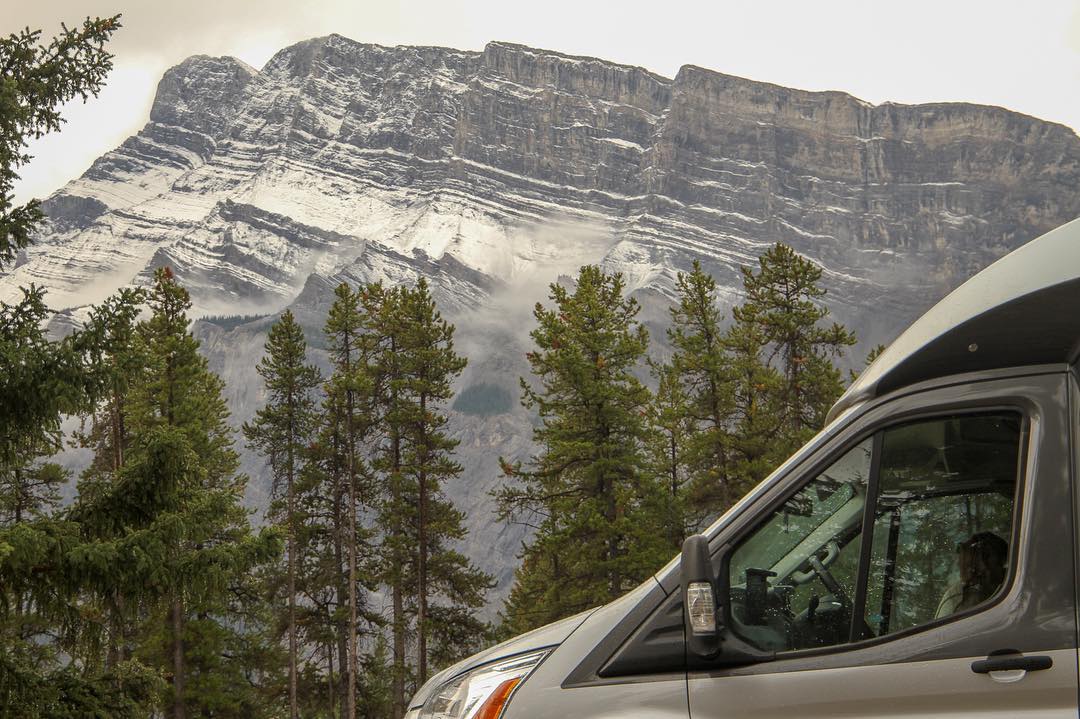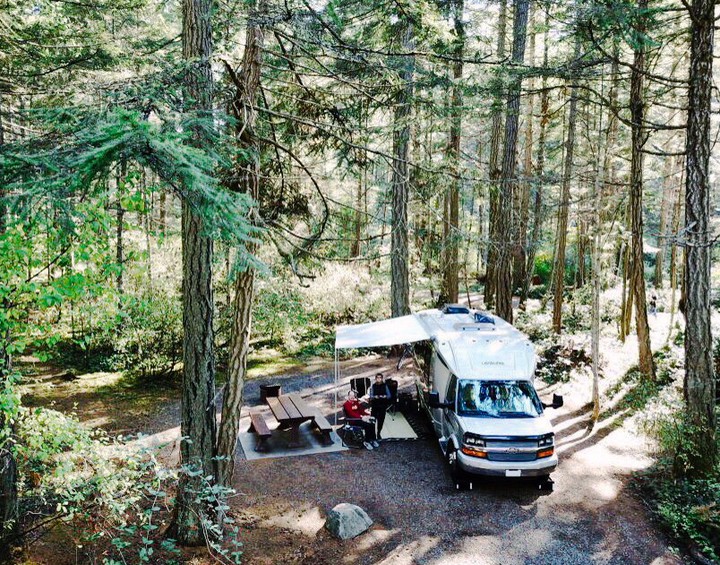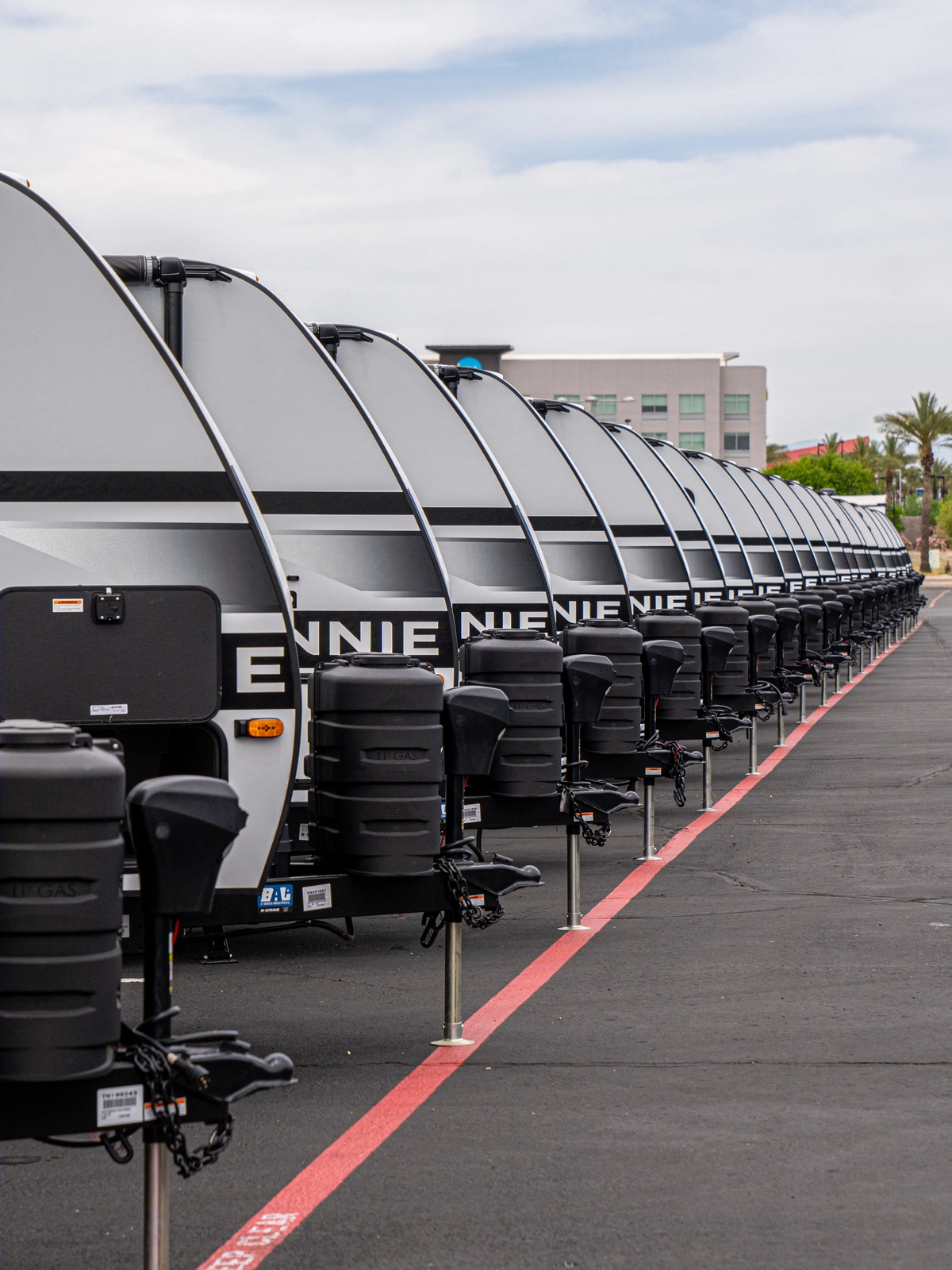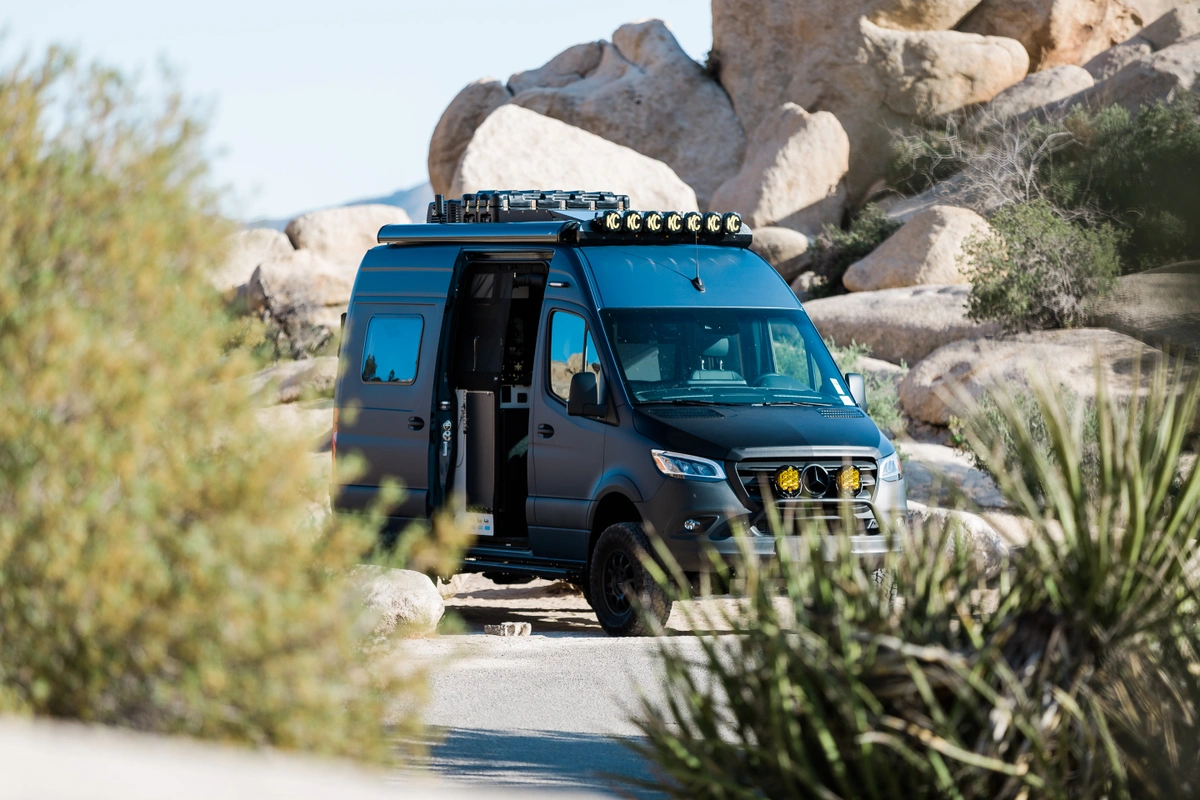Traveling through high elevation in your RV can create a few concerns and some necessary preparation to keep you safe. The best way to avoid high elevation accidents while RVing is to obtain as much knowledge as possible as to what happens, how to prepare and what to look out for when on your road trip. Today we're bringing you our tips on the subject so you can go into the fall and winter seasons ready and excited for the new terrain. From RV appliances to food, power loss, people and yes, even your pets, here's what you can expect.
If you have any health concerns, we encourage you to check with your doctor before making the trek to high altitude. Be sure to look over your RV manual for any information on your generator or appliances for any additional information and make the suggested adjustments before you set off.
Photography: @amongthepine
POWER LOSS
As you drive your motorhome into higher elevations, the air becomes thinner and the engine loses the ability to produce at its maximum rated power. This can lead to a corresponding drop in generator output wattage. Different types of engines will react in a number of ways. You will typically lose 10% of the rated output every time you gain 3,000 feet. Diesel engines are known to handle fuel injection requirements at higher altitude well, but carbureted gas-powered engines do not. Generators with carburetors can be adjusted for higher altitude, but make sure to reset it when you descend as you can cause some real damage to your generator, (don't want to burn your engine's valves!)
Photography:@heathandalyssa
ALTITUDE SICKNESS
Altitude sickness, also known as mountain sickness, is a common problem that generally occurs at an elevation of over 8,000 feet (but can occur lower.) When in higher altitudes, pressure drops and less oxygen is available. If you find yourself dizzy, nauseous, experiencing a headache or muscle aches, you have the most common and mildest form of altitude sickness, known as AMS. These symptoms usually come on within 12 to 24 hours of reaching higher elevation and get better within a day or two as your body adjusts to the change in altitude.
If you experience High Altitude Pulmonary Edema (HAPE), this is a buildup of fluid in the lungs, or High Altitude Cerebral Edema (HACE), the most severe form that creates fluid in the brain, you need to seek medical attention ASAP. Symptoms include those experienced during AMS as well as vomiting, fatigue, shortness of breath, no appetite and trouble sleeping. Instead of feeling better as time goes on, you'll feel worse and can experience trouble walking, confusion and chest tightening. Besides seeking medical treatment, the best way to relieve altitude sickness is to go down to lower elevation right away (less than 4,000 ft). Be aware, altitude sickness can happen to your pets! Make sure to keep an eye on them and if you notice any behavioral changes, go to lower elevation and seek professional help from the vet.
The best way to lower your chance of getting altitude sickness is through acclimation. Let your body slowly get used to the changes in air pressure over time, as you travel to higher elevations. Plus, this will give you the opportunity to spend more time in beautiful country anyway, so it's a win win.
Photography: Bev Mitchell @leisuretravelvans
APPLIANCES
Have you recently looked through your manual and noticed the manufacturers' disclaimer that reads something like, "If operating your refrigerator on propane gas at altitudes higher than 5,500 feet you may experience burner outages or reduced cooling performance of the refrigerator," and wondered, is this really accurate? The truth is, yes, it can happen. If your flame keeps blowing out when you try to ignite it, open your door and let the cool air reach the burner. It's been said that this will help but if not, you're better off plugging into shore power. If this doesn't work, you might have to do without or head down to lower altitude. Check your owners manual for any additional information about your specific appliances.
Photography: @barebonesliving
RV FOOD
If you buy a bag of chips at low elevation, chances are when you increase in elevation, you'll end up with a few popped bags in the pantry. While that's not the biggest deal, it is good to be mindful that cooking at elevation can be difficult. Higher altitudes means lower atmospheric pressure and therefore, a lower boiling point. Your cooking time will inevitably increase as you gain elevation. Also, if you're a baker, you'll need to make these adjustments to your recipes for over 5,000 feet. You don't want to mess up those Thanksgiving desserts this year!
Are you an experienced, high elevation RVer? We want to hear from you! Leave us a comment below to tell us your tips and tricks for high altitude travel and make sure to check out our Downloadable Boondocking Checklist for Camping Under the Changing Leaves.
High Elevation Tips to RVing Across the Country This Fall
Sep 27, 2019 | 5 min read






